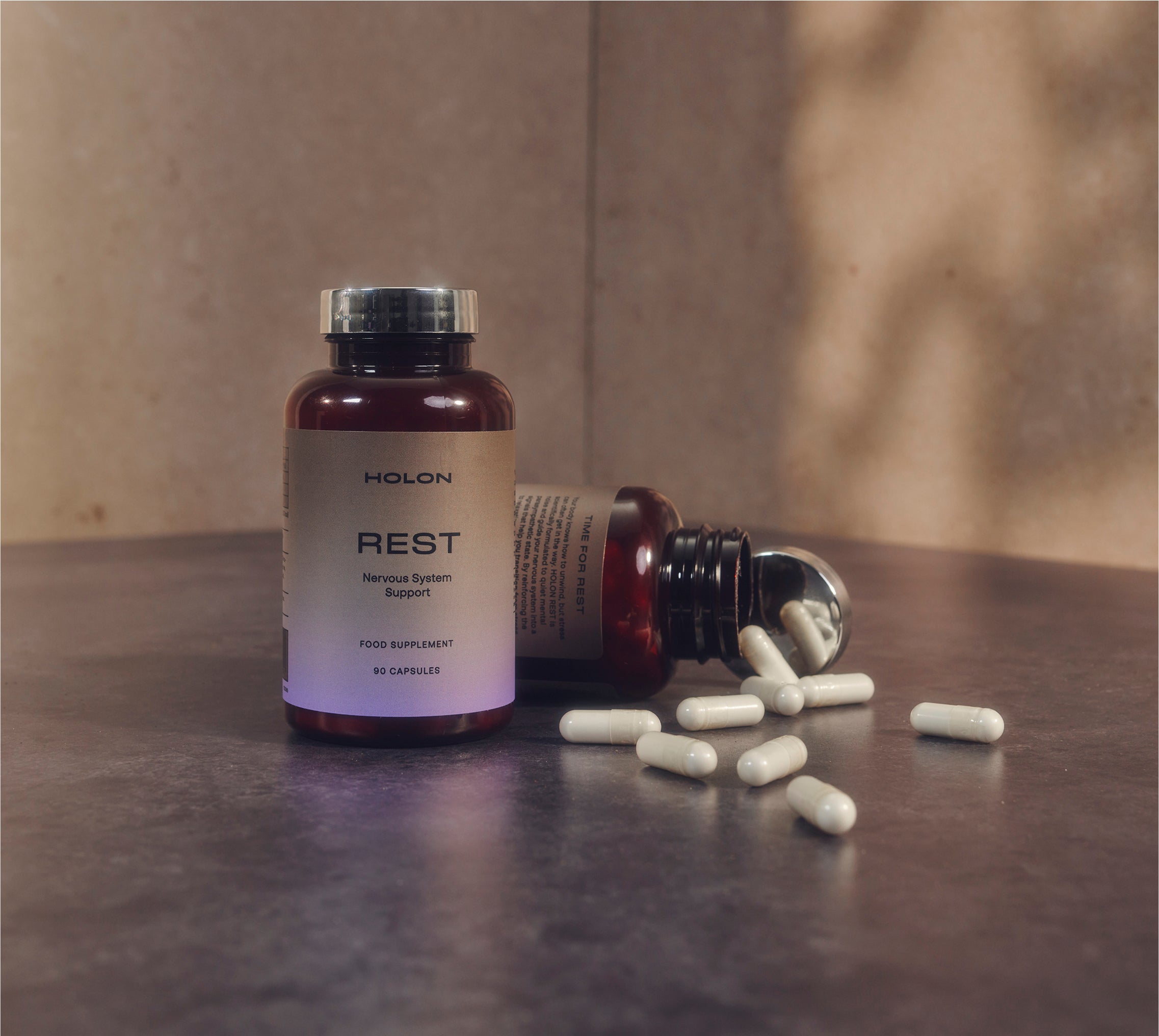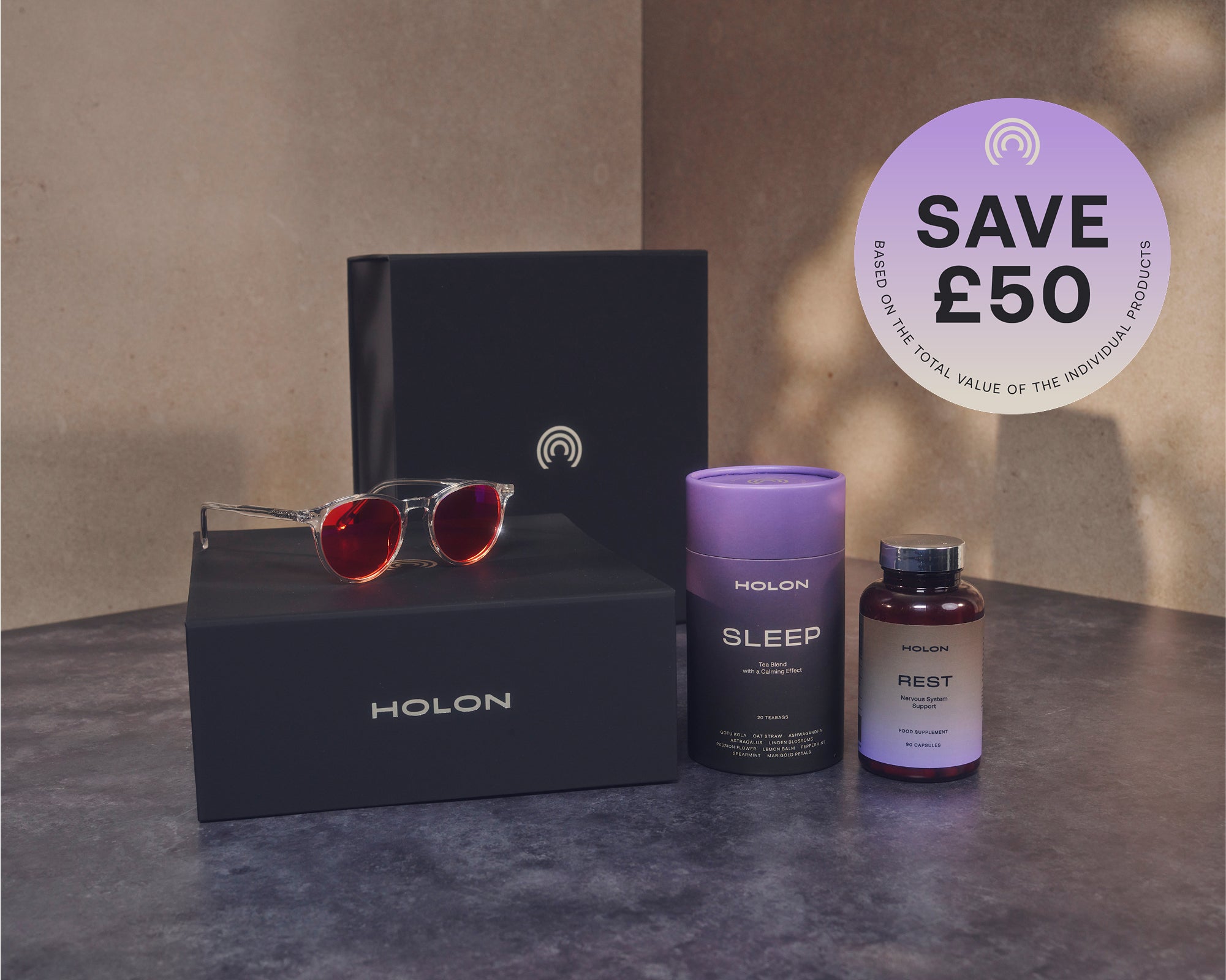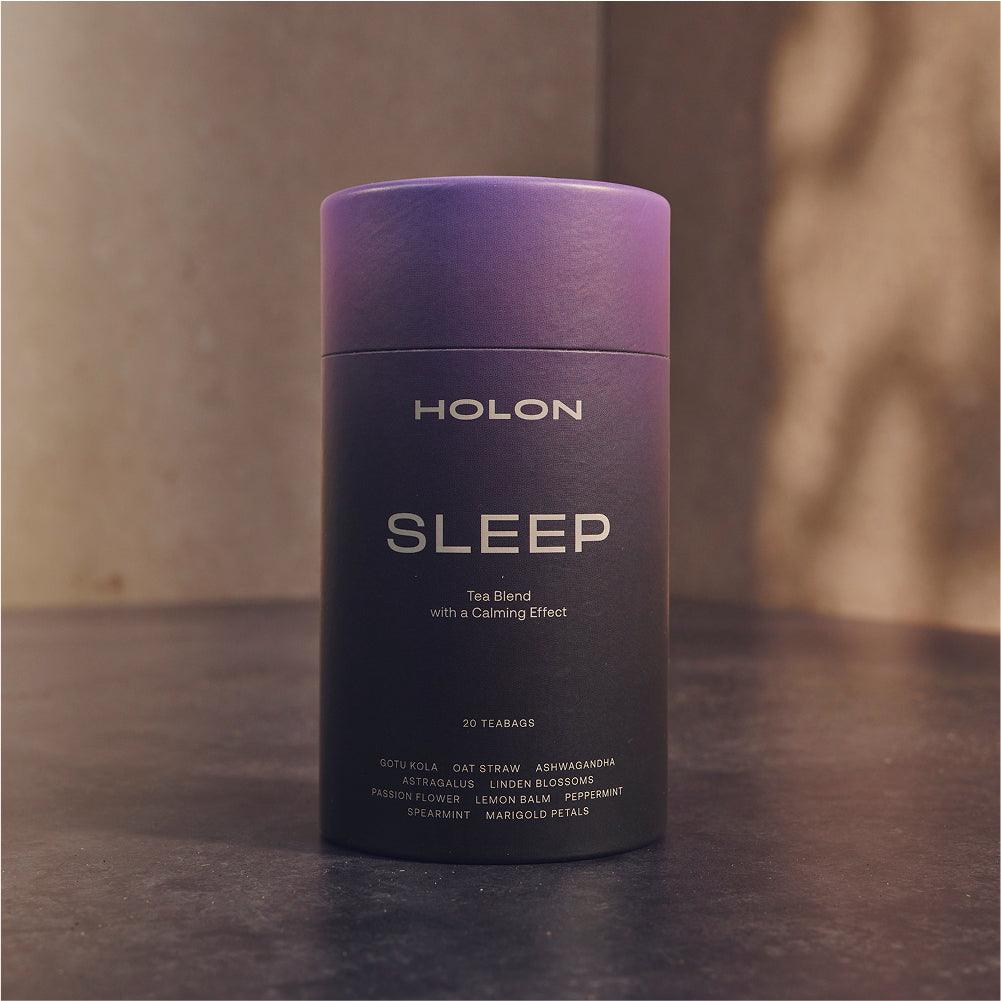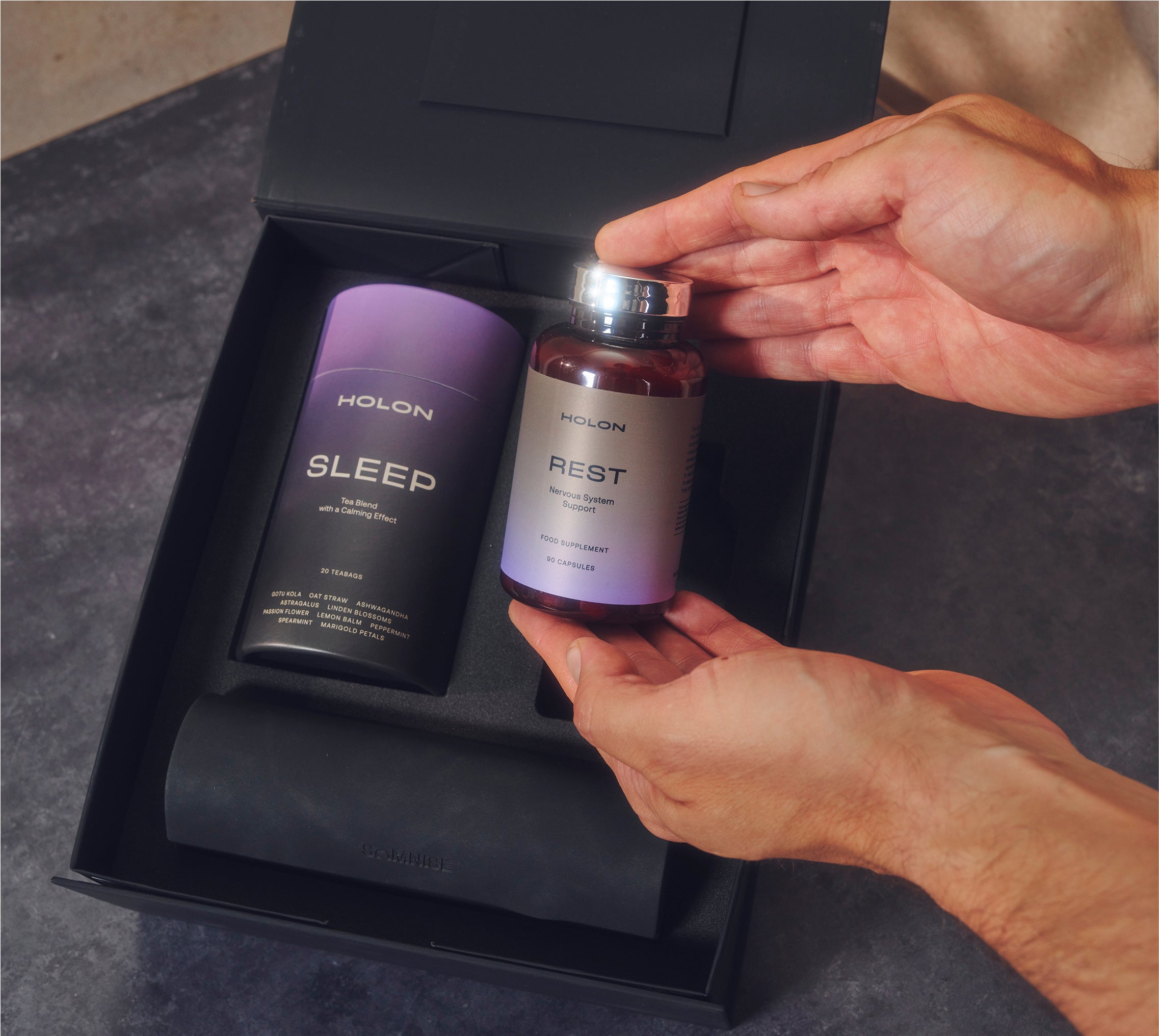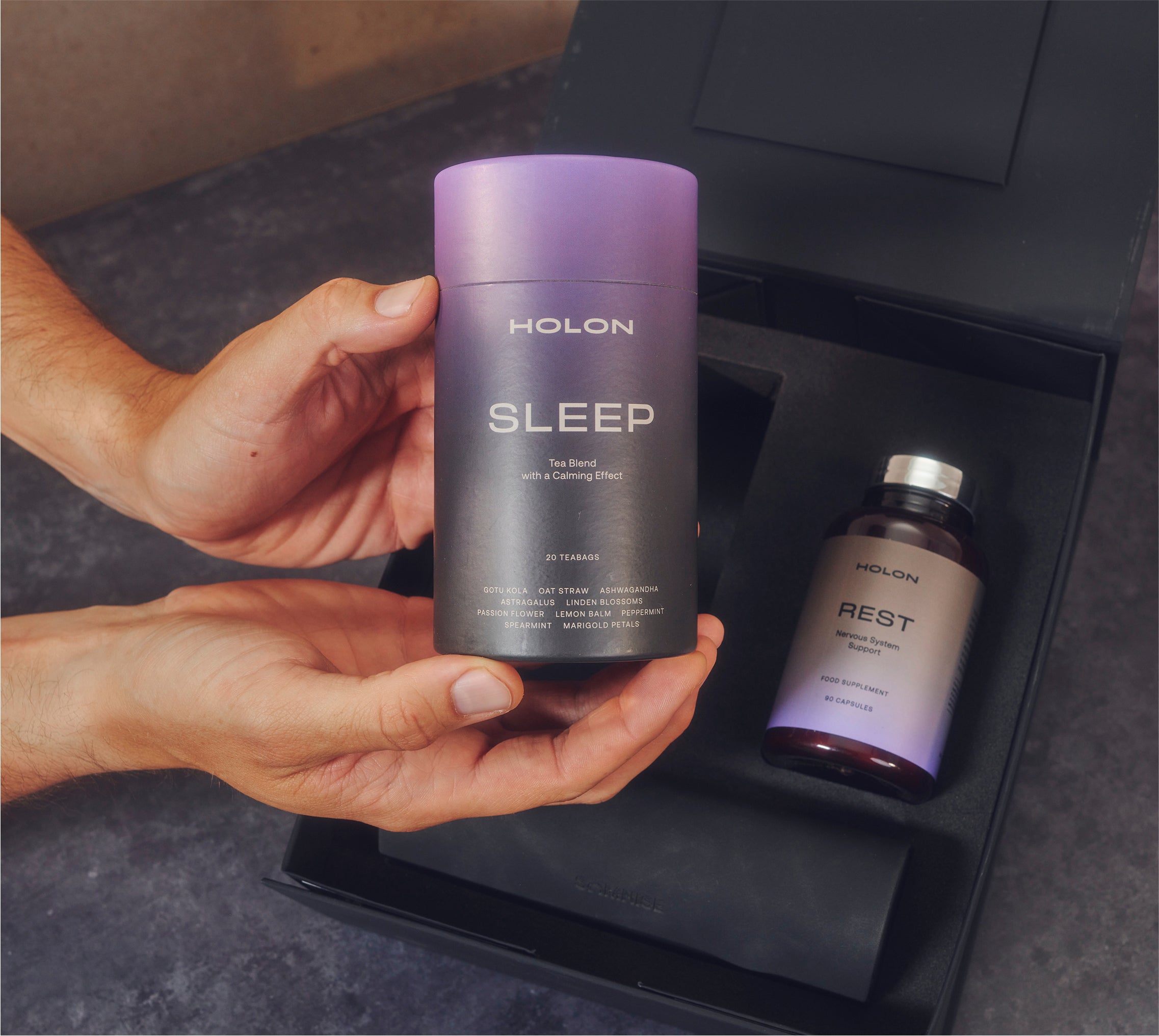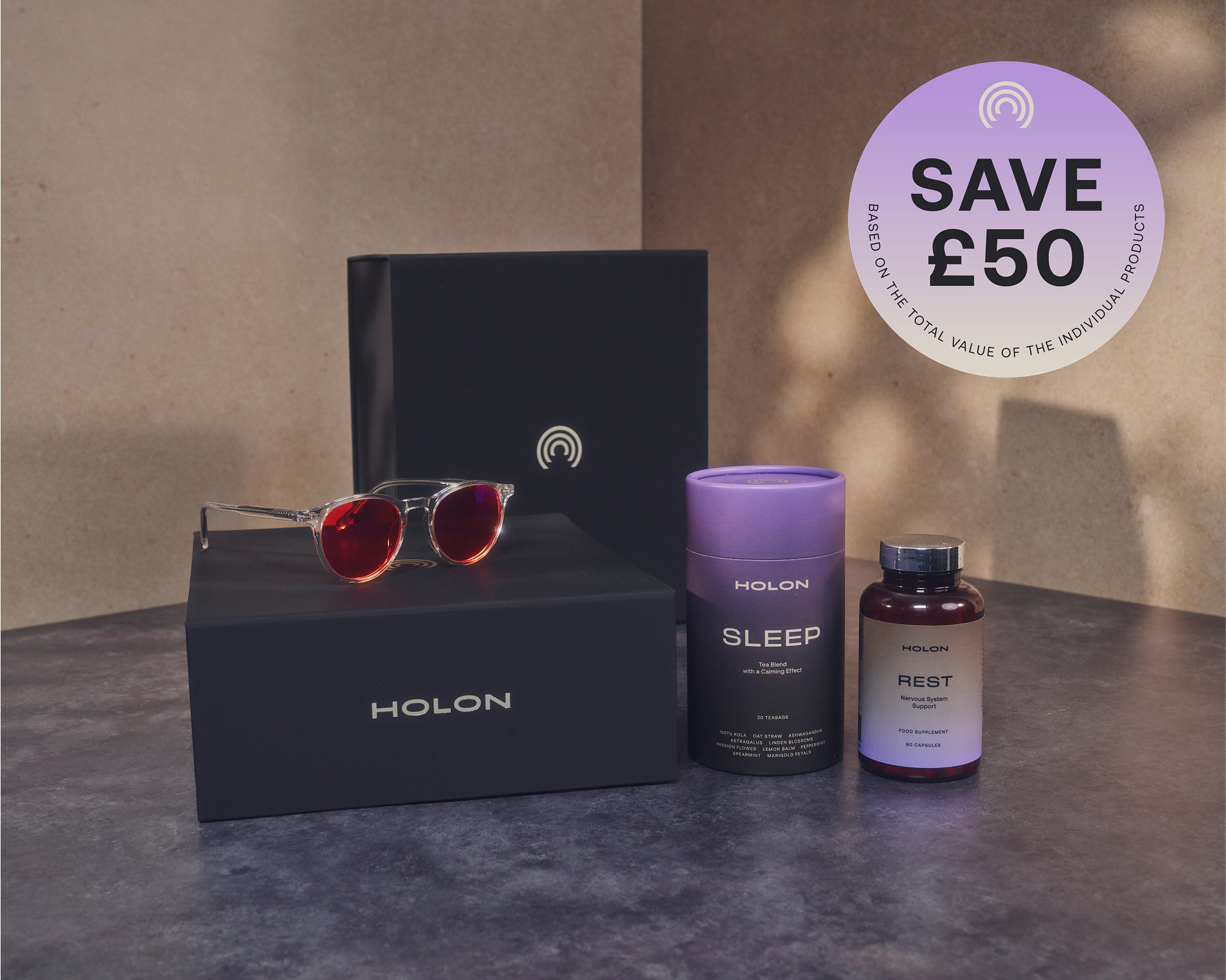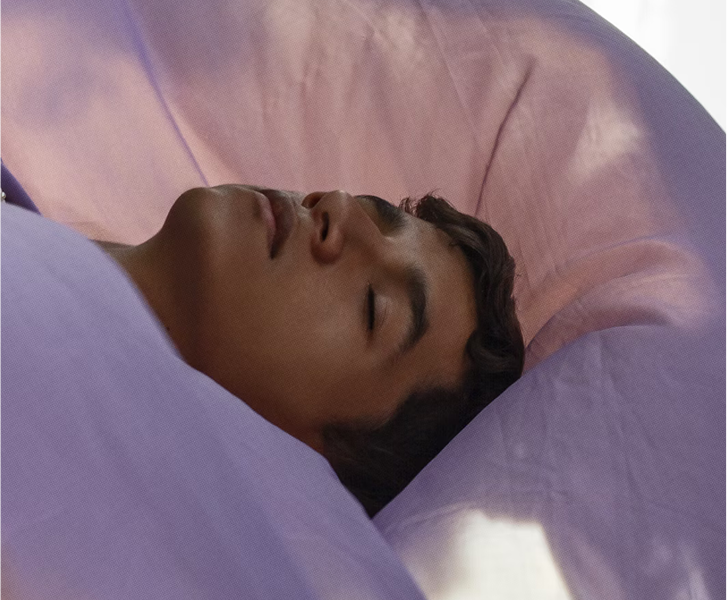
Sleep Study
Collaborating with a team from Harvard Medical School, we conducted a one month study on more than 30 participants to determine the impact of our sleep box on sleep quality, anxiety and stress.
Using the Pittsburgh Sleep Quality Index (PSQI) as our base methodology, we found a significant increase in self-reported sleep quality, reductions in stress and enhanced wakefulness.
Whole Systems Approach
In our overstimulated world, artificial light, chronic stress, and disrupted circadian rhythms sabotage sleep quality. Holon’s sleep system solves this by aligning your environment, neurochemistry, and biology via four science-backed components:
Light is the primary time keeper for the circadian system. Specialised retinal cells (intrinsically photosensitive retinal ganglion cells, or ipRGCs) detect short-wavelength blue light in the 400–550nm range and signal the suprachiasmatic nucleus (SCN) in the hypothalamus, which acts as the master circadian clock. Under natural conditions, this system aligns sleep–wake cycles with the solar day.
Modern lighting environments disrupt this finely tuned mechanism. Evening exposure to blue light from LEDs, smartphones, and screens suppresses pineal melatonin secretion, elevates evening cortisol, and delays sleep onset. Over time, this desynchronizes circadian rhythms, contributing to poor sleep quality, metabolic dysfunction, and mood instability.
SOMNISE glasses were engineered to block precisely this disruptive wavelength range, allowing melatonin secretion to rise naturally after dark, cortisol to decline as it should, and the circadian rhythm to remain synchronized. In essence, they restore the natural light–dark cycle that modern environments have disrupted.
Botanical compounds have been used for centuries to facilitate rest, and modern pharmacology has begun to elucidate their mechanisms. Many of the herbs in the Holon Sleep Tea act on GABAergic pathways, modulating the brain’s primary inhibitory neurotransmitter system. For instance:
- Passionflower, Lemon Balm, and Gotu Kola enhance GABA-A receptor binding, quieting hyperactive neural circuits.
- Ashwagandha and Astragalus act as adaptogens, regulating the hypothalamic-pituitary-adrenal (HPA) axis and lowering cortisol output.
- Oat Straw and Linden Blossoms support both relaxation and neuroplastic processes, with evidence for promoting neurogenesis and memory consolidation during sleep.
The synergistic action of these herbs reduces excitatory signaling, lowers sympathetic nervous system activity, and creates a parasympathetic-dominant state. Many of these herbs also act as adaptogens, modulating your stress response, as well as neurogenesis amplifiers. They not only facilitate sleep onset but also improve sleep depth and efficiency, while the ritual of tea itself reinforces the psychological transition from wake to rest.
Sleep quality is profoundly shaped by neurochemical balance. Key nutrients target specific mechanisms that support the nervous system’s ability to enter restorative states:
- Magnesium glycinate functions as both a cofactor for >300 enzymatic reactions and a natural NMDA receptor antagonist. By modulating glutamatergic signaling, it reduces neuronal hyperexcitability while enhancing GABA activity.
- L-theanine, an amino acid from tea, increases alpha brain waves and boosts GABA, dopamine, and serotonin — a neurochemical profile associated with calm, focused relaxation.
- Taurine stabilises neuronal membranes, supports GABAergic tone, and modulates calcium signaling, amplifying both inhibitory control and sleep depth. It also supports liver detox processes throughout the night.
Together, these compounds create an internal biochemical environment conducive to restorative sleep architecture. Unlike sedatives, they do not override natural processes but instead restore balance, enabling smooth entry into slow-wave and REM sleep cycles.
Sleep is not just biochemistry; it is a behavioral rhythm orchestrated by circadian timing. Research shows that consistent pre-sleep routines act as conditioning cues, strengthening circadian entrainment and improving sleep efficiency.
Along with your sleep box is a circadian rhythm guide, that includes a protocol for light exposure, meal timing, and daily behaviours which reinforce healthy sleep. The protocol transforms sleep from a passive outcome into an active, repeatable system grounded in chronobiology and neuroscience
Our 3-2-1 protocol makes things simple, and is structured to align with the science:
- 3 hours before bed: Blue light is blocked, allowing melatonin to rise on schedule.
- 2 hours before bed: Herbal tea introduces anxiolytic and adaptogenic compounds while serving as a behavioral signal to downshift.
- 1 hour before bed: The Rest supplement optimises neurochemical conditions for sleep onset and depth.
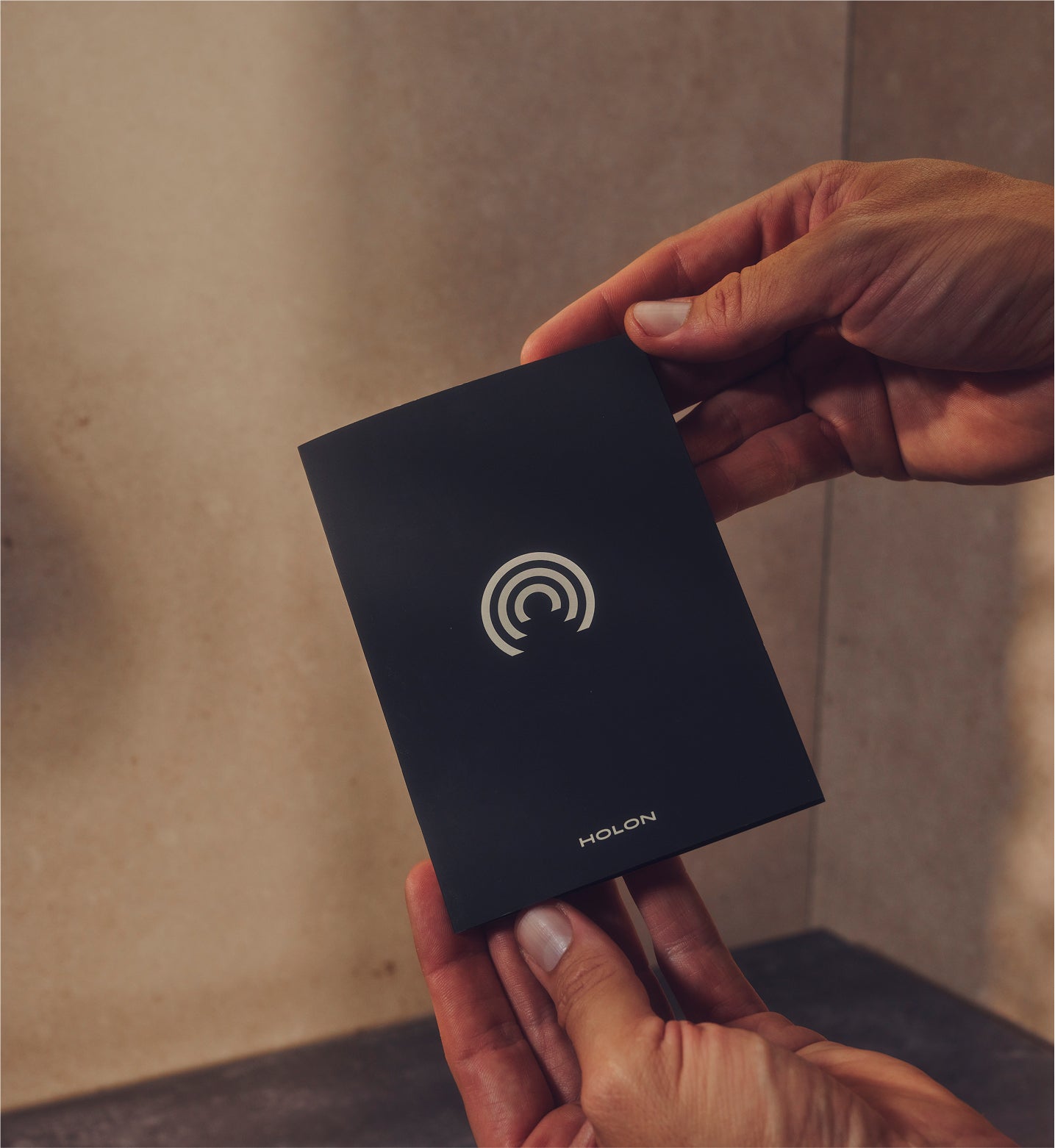
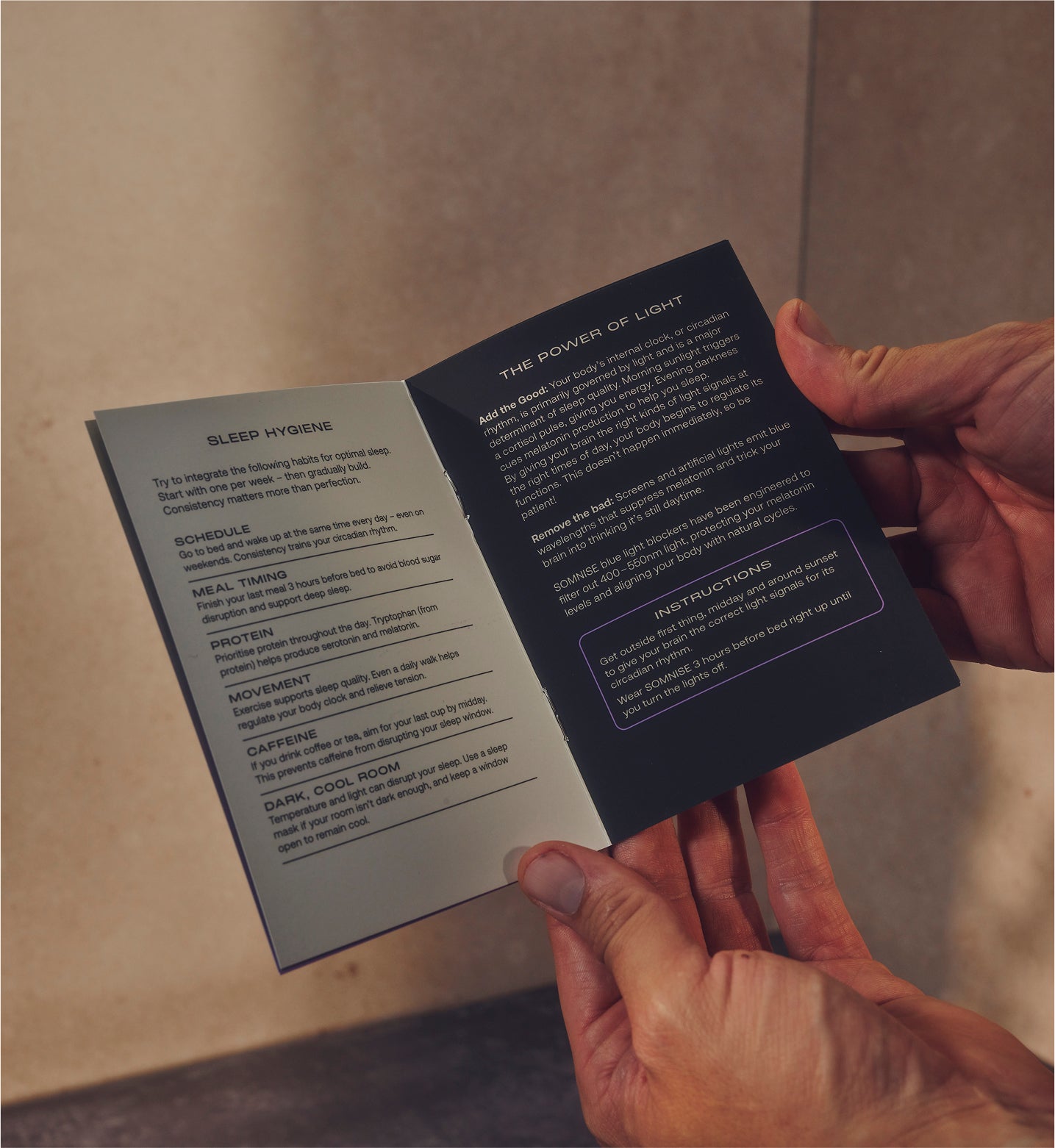
How the Synergies Work
Each layer is powerful on its own. But when stacked,
they amplify one another:
